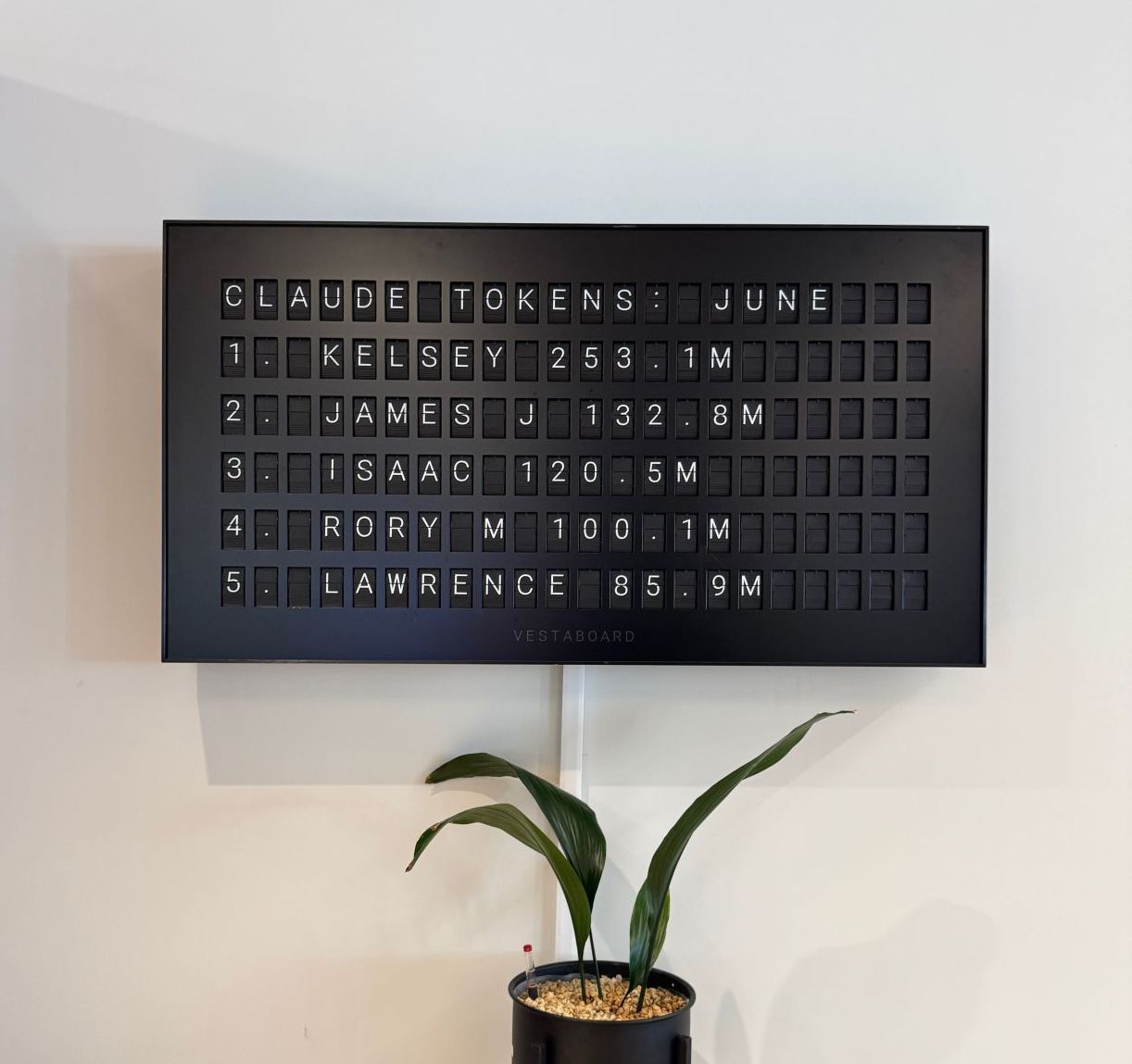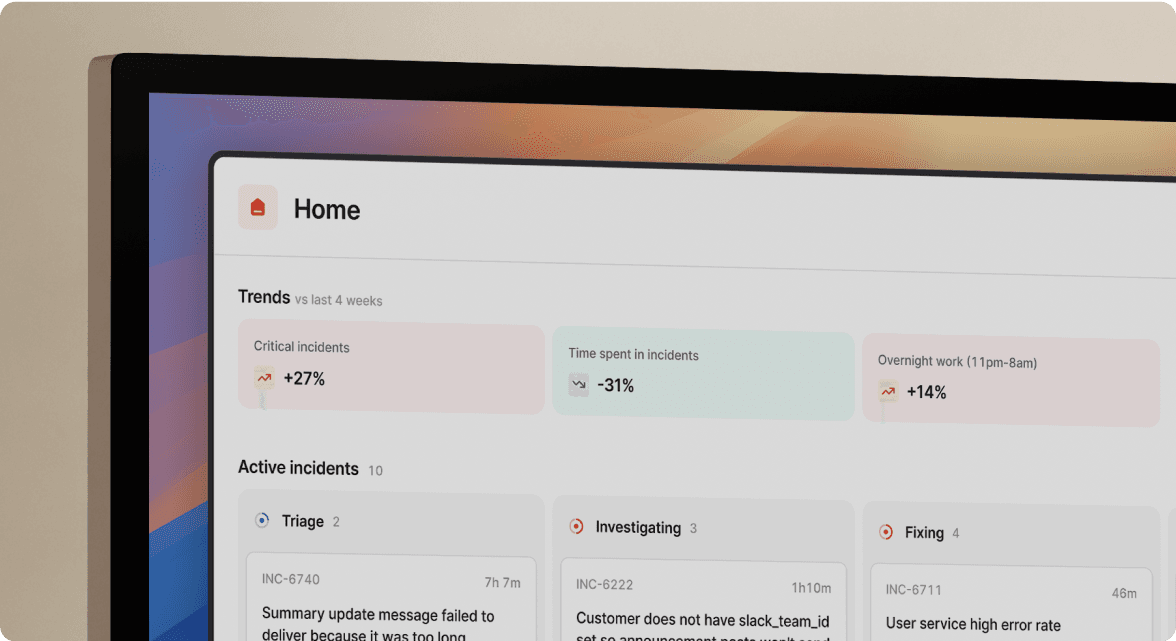Using Claude to power up your onboarding 🚀

I joined incident.io about ten weeks ago, having been in my previous role for four and a half years. Being a new starter was an unusual feeling for me, and there's been a huge amount to learn; but by lunch on my second day (!) I had started shipping value to our customers.
A large part of hitting the ground running has been having a colleague alongside me, who I can pester with questions, who doesn’t get offended when I write in all capitals, and often praises me for being absolutely right!
That colleague is Claude code, and here are some approaches I've found useful to level up my onboarding, making me productive sooner.
1. Using CLAUDE.md files to understand your codebase
CLAUDE.md files are the accepted way to explain codebases to AI LLMs. But they are also a good way to get new joiners up to speed with the fundamentals of your codebase. A good CLAUDE.md file:
- Explains the architectural approach
- Points the reader in the direction of where to find out more
- Gives examples of how to do things
All of which are equally important to an LLM traversing your codebase, and to a new starter eager to start delivering value.
Whenever I start a task in a part of the codebase I’m unfamiliar with, my first step is to go through the relevant CLAUDE.md files to help orientate myself. Our ability to deliver quickly is in large part to the consistency of architecture and approach across the codebase, something that both Claude and I appreciate as we figure out what to do.
2. Claude, the artist
We have a lot of flows where:
- An integration hits a http endpoint
- An event is published (via Google pubsub)
- One or many handlers listen to that event
- And they may fire off more events as a result of that
For example, our AI powered call transcription service (Scribe) starts with a simple HTTP request of messy data (raw words said by users in a call). From there, we store the raw data, process it, store it again, and depending on how long it’s been since the last update, we publish a call update in the incident channel.
It can be slow going working your way through these events, looking for where they're published and handled, so asking Claude to draw a diagram of event flows is a quick way to get an overview of a feature.
💡 Using a custom sub-agents here can be a useful way of boiler plating a good diagraming prompt.
3. Rubber Clauding
At incident.io, we are either working on a project, or we're on "Product Responder", working through small feature requests, raised bugs and opportunities to make our customer experience magic.
Making use of Linear's MCP, I can ask Claude to search for previous similar issues and pull back any relevant discussion or notes left on those tickets. Engineers here are generally pretty good at evidencing their thought process on a ticket as they debug an issue and future me (and Claude) is very thankful for this.
As I get deeper into debugging an issue I’ll often need to dive into our observability stack to understand what’s happened, and not having worked with grafana before, getting Claude to craft queries from vague prompts has been a huge help.
💡 Custom slash commands can be useful here. I have a /copy command that takes the last output from Claude and pastes it to my clipboard, good for when you want to use the query it’s just written.
4. Secretary Claude
When trying to understand how and why something has been built the way that it is, it’s useful to work alongside Claude, to get a full picture of the feature. But you only want to do that once, so building up a notebook of your findings is helpful.
I’ve given Claude access to a notes directory and built a /note_this slash command that will summarise the last thing we’ve discovered and append it to a note for the feature I’m working on. Then I can use these notes to build a better understanding of the feature, and share my learnings back to the codebase in a CLAUDE.md to save a few steps for the next new starter. Combining this approach with diagrams is a killer way to build your knowledge base.
5. Claudeception: using Claude to Claude better
I’m certainly not a Claude power user, and I’m yet to even touch the sides of our weekly token leaderboard, but the more you use Claude, the more you see the benefits in building out your settings files. Run Claude in your ~/.claude directory and you can get Claude to build a global settings file for you. Although, I’ve found that it doesn’t have canonical knowledge of a Claude settings file, and often writes invalid files. In the unlikely event that someone from Anthropic is reading this - I’d love for Claude to be better here!

The way in which Claude stores conversations (in .jsonl files within ~/.claude/projects) also makes searching through them very claudable and often amusing. By default, it only keeps the last 30 days of history - so if you do find yourself having a tantrum, it's not long before all is forgotten.
A final note.
It's been a great first few months of working at incident.io. There's no substitute for having my colleagues talk me through our product, but having the power of Claude at my fingertips has meant some of my really stupid questions have bypassed them, allowing us all to focus on delivering value for our customers.
Unfortunately, Claude is unable to help with our overwhelming selection of coffee machines, but I'm slowly getting there too.

See related articles
So good, you’ll break things on purpose
Ready for modern incident management? Book a call with one of our experts today.

We’d love to talk to you about
- All-in-one incident management
- Our unmatched speed of deployment
- Why we’re loved by users and easily adopted
- How we work for the whole organization





